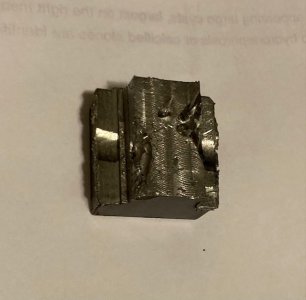- Joined
- Jul 22, 2019
- Messages
- 29
I looked some on the internet and on the forums, but was not sure if the cnc info was applicable to a manual mill-drill. I also assumed that the info related to carbide tools was not applicable to HSS. Bottom line, I was not sure that any of the info that I found applied to my situation.
I knocked off for the day after breaking my third end mill. :-( Presumably I am exceeding the limits in terms of feed rate and/or depth of cut. Think in terms of HSS end mills, 3/8" or 1/2" in diameter. What is reasonable in terms of depth of cut? Does it depend on whether the depth of cut is down or sideways? How about feed speed on the X or Y axis? I was working on creating a shoulder on a piece of 1 inch square bar, starting with a length of bar under 1 inch.
I also noted that the part tended to walk in the vise, presumably also a result of excessive feed and/or depth of cut. I suppose the small size of the piece did not help. It made me think that I might have been better off starting with a larger piece, and cut off the excess after the other milling is done. Maybe parts walking contributed to breaking things.
If someone could point me to the right website and/or video, that would be great.
Richard
I knocked off for the day after breaking my third end mill. :-( Presumably I am exceeding the limits in terms of feed rate and/or depth of cut. Think in terms of HSS end mills, 3/8" or 1/2" in diameter. What is reasonable in terms of depth of cut? Does it depend on whether the depth of cut is down or sideways? How about feed speed on the X or Y axis? I was working on creating a shoulder on a piece of 1 inch square bar, starting with a length of bar under 1 inch.
I also noted that the part tended to walk in the vise, presumably also a result of excessive feed and/or depth of cut. I suppose the small size of the piece did not help. It made me think that I might have been better off starting with a larger piece, and cut off the excess after the other milling is done. Maybe parts walking contributed to breaking things.
If someone could point me to the right website and/or video, that would be great.
Richard




